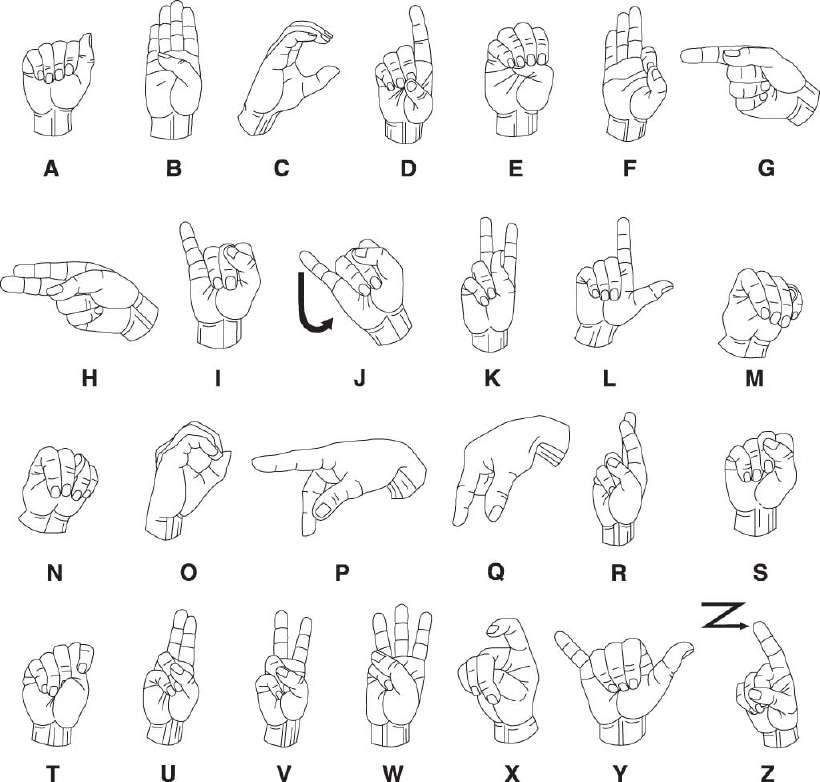How did Sign Language Originate?
Home / Science for Kids / 5Ws & H For Kids / How did Sign Language Originate?
Have you ever seen people deep in conversation with each other without a single sound coming from their lips? Their hands and fingers move animatedly as they silently ‘speak’ sentences that sometimes you can also guess at. These people are actually conversing using sign language because they are hearing or speech impaired.
Across the world, people have developed sign language to communicate with each other and with the rest of the world. Signs and gestures have always been in use. Medieval monks who have taken vows of silence, Native Americans, African bushmen and others are fluent in the art of gestures and sign language communication. These could be signs such as asking for food or water. In England, the medieval monk Venerable Bede devised a number code based on manual signs.

Indian classical dancers also make use of a rich vocabulary of gestures called ‘mudras’. Most ‘mudras’ describe actions, such as eating, while others represent emotions, animals, even gods and goddesses. For example, by joining the thumb, the middle finger and ring finger, while the other two are fully extended, the dancer represent a deer.
Sign language, as we know it today, originated in the 16th century when an Italian physician called Geronimo Cardano, decided to teach deaf people by writing a combination of symbols and associating them with the thing they represented.
However, the real breakthrough came in 1755, when a French priest, Abbe Charles Michel de L’Epée, founded a school for deaf people in Paris. He developed a form of communication through a system of gestures, hand signs, and finger spelling for easy communication. The Abbe improvised his system after studying existing signs and gestures used by deaf people. This ultimately became a finger-spelt version of spoken French of the time.
The L’Epée system became the forerunner of modern day French sign language. In 1816, Dr Thomas Hopkins Gallaudet adopted this system after seeing it in Paris. In 1817, the first permanent school for the deaf was established at Hartford, Connecticut in the US. This sign language was merged with various gestures already in use to form what came to be known as American Sign Language.
Around the same time, in 1778 in Germany, Samuel Heinicke was working on a system to teach deaf people the science of lip reading. Heinicke developed a system of teaching through oral patterns wherein deaf people could understand words by studying the lip movements of speakers.
The most important element of manual communication is the use of hands and fingers to simulate concepts and ideas or express words through finger spelling.
Some gestures are universal. For example putting a finger to your head and twirling it is universally understood to mean “slightly mad”. Or the forefinger rubbed across the lips to mean “you’re lying”! Modern day sign language uses both single hand, as in the American system, or double hand spelling, as in British and other European systems.
Since each country has its own sign language with gestures, an international sign language called Gestuno has been developed. In international conferences and events, Gestuno has found a ready audience.

Sign language works beautifully between two people knowing the language. But when a hearing/speaking person who doesn’t know sign wants to ‘talk’ to a hearing-impaired person, he needs to keep some things in mind.
He or she must first draw the attention of the person s/he wants to speak to so the person can see the speaker. Speak clearly without mumbling and never turn your head away while speaking. If the person cannot see your lips, you may as well be talking to a wall.
Be precise and if what you say is not understood, repeat what you said without shouting. Shouting distorts the mouth and lips and it becomes difficult to lip read.
Never belittle or waive a sentence off, if you think the other person hasn’t understood. The responsibility for communicating clearly lies with you.
663 words |
6 minutes
Readability:
Grade 8 (13-14 year old children)
Based on Flesch–Kincaid readability scores
Filed under: 5ws and h
Tags: #sign language, #fingers, #signs
You may also be interested in these:
Why Do Knuckles Pop?
How do Nails Grow?
The Magnetic Knife
From Cave Drawings to Floor Drawings
Can Frog Fly?